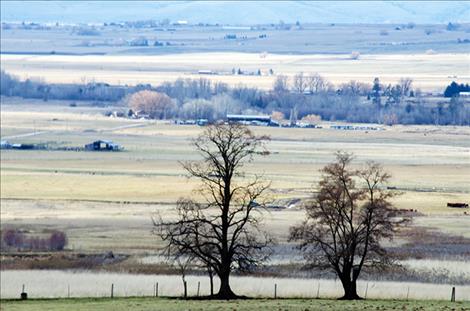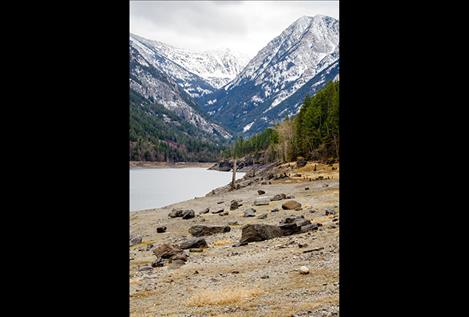Record warm temperatures melt snow across valley
Hey savvy news reader! Thanks for choosing local.
You are now reading
1 of 3 free articles.
The Mission valley isn’t generally balmy in December, but the record-setting month brought temperatures above average this year.
St. Ignatius recorded 60.88 degrees on December 21. The average temperature for that date is 35 degrees. Kalispell and Missoula broke high-temperature records for December 20 and 21, and Kalispell tied the record on the 22nd.
“If you planned a barbeque party for the solstice you were pretty lucky,” said Confederated Salish and Kootenai Tribes hydrologist Casey Ryan.
According to the National Weather Service, this December was the sixth warmest on record for Kalispell. The warm temperatures melted snow, leaving bare green grass exposed on lawns. The influx of rain in the New Year was also out of the ordinary. Missoula saw the wettest New Year on record: nearly a third of an inch of precipitation fell and the temperatures were in the 40s. “Umbrellas are competing with socks as the most practical Christmas gift this year,” Ryan said.
Increases in average temperatures can be attributed to global climate change, Ryan said. In the Mission Valley, temperatures have increased 1.9 degrees since 1950. The State of Montana has seen an even larger increase: average temperatures have increased 3.3 degrees.
The above-average temperatures have limited winter recreation by reducing the cold, snowy conditions necessary for such activities. Skijoring competitions were canceled in Kalispell due to warmer temperatures and a lack of snow in December 2019. The event is a winter sport where skiers are pulled by horses over a snowy course.
Average snowpack at lower elevations across the West have decreased since the mid-1900s. “The climate is changing globally and nationally, and we’re not immune to that here in the Mission Valley,” Ryan said. A single abnormally warm day cannot be attributed to climate change; however, Ryan said overall increases in average temperature paint a “clear picture” of climate change.
To date, snowpack for the year is near normal in the area. On Jan. 2, the Flathead Basin had just above its normal snowpack. The Clark Fork Basin had Montana’s lowest snowpack at 72 percent of normal. The state, as a whole, is seeing mountain-snow accumulation closer to what is expected than last year. At this time in 2019, snowpacks across the state were significantly below normal.
The precipitation event around New Year bolstered the local snowpack. During that event, the Jocko snow telemetry site recorded 20 inches of precipitation in two days.
Despite warming temperatures globally, the near future will likely hold colder weather. A cold front and arctic air mass could be headed toward the region to reduce temperatures. According to the National Oceanic and Atmospheric Administration’s predictions for the coming months, precipitation will likely be above average. Ryan said if those predictions play out, wintery conditions are on the horizon.
“We’ll have some very good news for skiers and less good news for commuters,” Ryan said.

















